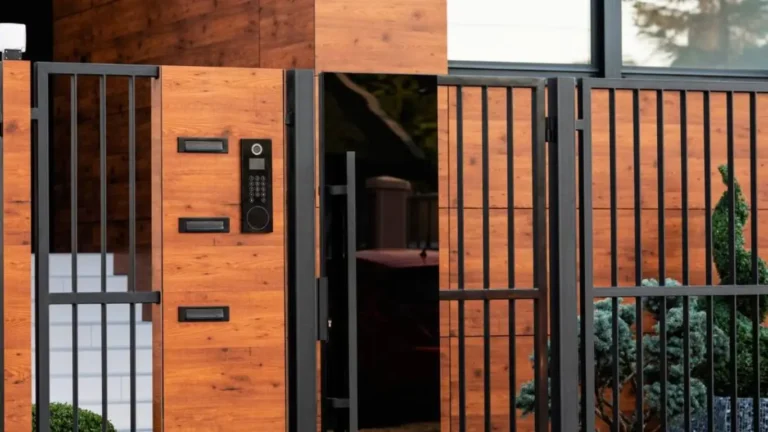Foggy windows are a common problem for homeowners. They’re annoying and make your home look less friendly. Foggy window repair is needed to fix issues like mineral deposits, fog between the panes, or broken seals.
These problems not only make your windows look bad but also make them less energy efficient. This guide explains why windows fog up in detail, discusses how to fix the problem, and suggests ways to prevent it from happening again.
Understanding Foggy Windows
Why do your windows appear hazy or milky? Double- or triple-pane windows frequently gather moisture between the panes when the seal fails due to age, water exposure, or extreme heat.
In this situation, the temperature fluctuates within and outside the window panes, causing moisture and calcium deposits to accumulate and etch into the glass.
Fortunately, you can learn how to repair foggy double- and triple-pane windows, restoring them to their former glory—or replacing them with modern models.
Why Does Foggy Glass Happen?
IGUs often have problems when the seals around the edges of the glass unit start to fail. This leaves the inert gas, and the air outside the glass panes enters.
Because of this, moisture in the air coming in can be collected when the conditions are right (colder glass on the outside versus warm air inside the glass panel), making the glass look foggy and hazy.
The foggy parts may come and go based on the weather. When it’s hot outside, and the glass is warm, the moisture inside the IGU doesn’t usually condense into visible condensation. But when it gets cooler, the moist air hitting the cold outer glass makes the moisture condense into droplets of water that can be seen.
When this fogginess comes and goes in a window, the seals on the insulated window have been broken.
All IGUs lose the inert gas that fills the space between the panes over time, and the seals will also wear out over time.
Researchers have found that many things, such as temperature and atmospheric pressure changes, wind loads, working loads, sunshine, water, and water vapor, shorten their life span.1 The International Association of Certified Home Inspectors states that every unit loses 1% of its gas annually.2
You can expect your IGU windows to stop working well and the seals to fall over time. It shouldn’t be a surprise when some of your thermal windows get foggy glass after 15 or 20 years of use.
However, if it happens during the window’s warranty period, you should first call the window manufacturer to see if they will replace it under the warranty.
Windows Fogging Up In House
There are several options for homeowners to fix their fogged windows. The options listed below include whether to handle the process themselves or hire a professional.
1. Replace The Window Sashes
The most straightforward technique to repair cloudy windows is replacing the window sash. The sash and the frame that surrounds it are the IGU. Most windows have two sashes, and replacing them gives the homeowner a brand-new, undamaged IGU that prevents fogging. The old sash is removed and replaced with a new one.
To replace a window sash, homeowners must collect exact measurements of the existing sash and contact the manufacturer. If the manufacturer does offer replacement sashes, the homeowner can place an order and have them shipped. This can be pricey, but ordering many sashes may save the homeowner money on a per-window basis.
How To Measure Accurately for a New Window Sash:
- Unlock the window and move the bottom sash upward a few inches.
- The top of the sash features two window locks. Pull both latches inward simultaneously to release the sash and tip it into the room.
- Once the window is horizontal, lift one corner of the window track to remove the sash.
- First, use a tape measure to measure the window’s width. To guarantee accuracy, measure the width at three points on the sash: across the top, bottom, and middle, and note each measurement. Circle the smallest number and label it with a “W.”
- Next, measure the sash’s height from the left, middle, and right. Record each measurement, select the smallest, circle it, and label it with an “H.”
- Call the manufacturer and give them the circled measurements “W by H.” This ensures that the sash is in the correct alignment.
When the new sash comes, repeat steps 1–3 to replace the window and latch it in place.

2. Replace Windows
Another approach to eliminating fog in older windows is to replace them. Replacement windows will be more energy efficient overall, and incentives for upgrading from older, less efficient windows may be available.
When it comes to replacement windows, it is common for a business to visit your home, measure each window, order replacements, and install them for you. They remove the original panes and window stops, install the replacements, and caulk, seal, and trim around them.
There is no need to alter the home’s façade or current window frame. However, this method is pricey, although experienced DIYers can save money by ordering and installing their windows.
3. Replace The IGUs
Another option is to replace the old IGU with a new one. This will improve the window’s energy efficiency while preserving the antique sash frame. It’s important to note, however, that this is a more extensive operation than replacing the sash, and it’s frequently preferable for a professional window company to handle it rather than a DIYer to do it themselves—but it might be challenging to locate a shop ready to do so.
To replace an IGU, remove any retention clips or strips holding the glass to the sash, then cut through the old sealant to remove the IGU. The shop will measure the IGU and then construct it or order a replacement.
The shop will fix the new IGU using appropriate sealants, ensuring the seal is air and waterproof before restoring the strips or clips. The job has numerous more complexities, and these intricate elements might be challenging for DIYers.
4. Window Defogging
The final method for foggy window repair is defogging. This procedure does nothing to address the energy efficiency loss but will eventually restore a window to its former transparent state.
Defogging entails drilling holes in the glass, injecting a cleaning solution into the area between the panes, extracting the contaminated liquid, and injecting a drying solution between the panes. Once the glass interior is arid, the holes are sealed, and the window is ready to go and fog-free.
The problem with defogging is that, as previously stated, it does not restore lost energy efficiency due to deteriorating window seals. However, since leaking seals create fog and condensation, it is unlikely to impact energy efficiency negatively.
Furthermore, DIYers who have to gain prior expertise working with glass are more likely to damage or chip it during drilling, necessitating the purchase of a new sash or IGU.
How to Keep Your Home Windows From Fogging Up?
Install your windows appropriately and provide adequate airflow throughout your home to ensure they last for decades and remain fog-free.
Here are some more methods to improve the longevity of your energy-efficient glass, whether it has vinyl, aluminum, or wooden window frames:
- Invest in high-quality windows: To minimize your home’s energy consumption, contact your window manufacturer to see whether they provide a lifetime product warranty. Up to 25 to 30% of your home’s energy is lost or gained through windows; having high-quality windows can make a significant difference.
- Install Windows properly: Have faith in the contractor installing your windows. To ensure their qualifications, look at their background and ask about their experience with Windows. Improper installation might cause issues with window glass and seals.
- Perform Routine Maintenance: Examine your windows every few months. Look for degradation symptoms, such as sash damage or a window seal. This way, you can identify any problems before you need to replace them, and if you don’t need them right away, you’ll get the most outstanding price when you do. Additionally, learn how to clean the inside of windows to avoid moisture buildup properly.
- Ventilate Your Home: Set up your home to promote healthy air circulation.
Even in the winter, keep fans going to prevent warm air from gathering near your windows:
- Use a dehumidifier to eliminate moisture from the air that may get between the window panes.
- Purchase a window film kit to protect your windows and adjust the temperature.
- Open the windows and doors to the rooms you use frequently.
- Weatherstrip your walls.
- Keep the exterior gutters clean.
- Allow for sufficient fireplace ventilation.
- Keep the air vents open.

Fix Foggy Windows Benefits
Choosing the foggy window repair through defogging rather than replacing them has several advantages, including:
- Efficiency – Replacing a window can take a whole day of work, and replacing many windows in a home is significant. What is the good news? Foggy window repair typically takes less than 20 minutes, so you won’t need to devote one or more days to the task. To top things off, the repair procedure is simple. Someone comes directly to your home to resolve your fog issues.
- Financially – foggy window repair is much less expensive than window replacement; you’ll save 50% or more by choosing a repair versus an IGU replacement. For several foggy windows, this type of restoration is significantly more cost-effective. If you select a defogging service that restores the insulative capabilities of your windows (R-value), you will also improve the insulation in your home. The result? You will save money on heating and cooling your home.
- Environmental – You save outdated, non-recyclable windows from a landfill by repairing your window rather than replacing it. Along with the monetary savings mentioned above, repairing a window’s R-value will result in better insulation. Using less energy to heat and cool your home is better for the environment.
Foggy Glass Window Repair | When Should You Do?
A failed window pane seal might cause condensation on the interior of your windows.
Common indicators to look for include:
- When the window seal fails, cool air leaks into double-paned windows.
- When this occurs, the now-colder windows attract condensation, which cannot be removed with simple remedies.
When you’ve done everything possible to eliminate moisture in your home, but your window glass is still accumulating condensation, contact a professional glass specialist. The technicians at Esna Glass can determine if you require new glass or window replacement.
Foggy Window Repair Near Me
Esna Glass is the best choice for window glass repair Brampton in Brampton and Mississauga. We guarantee that your glass repair needs will be met quickly and professionally thanks to our dedication to quality work, quick service, and fair prices.
Do not let damaged or broken windows make your home or business less safe or attractive. We can provide you with reliable options made to fit your needs. Our crew is skilled and ready to do any job with accuracy and care, whether fixing a small crack or replacing a whole pane.
Contact us immediately to set up your repair service and see the difference. Let us make your windows clear and effective again, which will improve the look and value of your home. We want you to be happy, and we’re excited to go above and beyond your goals every step of the way.




